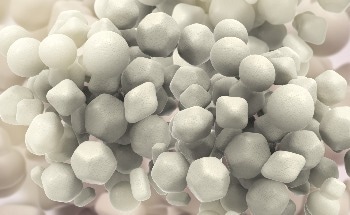
Recent studies published in Nature Communications by an international team of scientists from Michigan State University showed that nanoparticles can traverse the digestive system and deliver medication directly to brain tissue. The findings emphasize the importance of standardized procedures in analyzing the protein corona of nanoparticles, which is crucial for advancing clinical applications in nanobiotechnology.
Nanoparticles that travel through the digestive system and administer medication directly to brain tissue offer potential benefits for patients with neurodegenerative conditions such as multiple sclerosis (MS), amyotrophic lateral sclerosis (ALS), and Parkinson’s disease (PD).
Our work is focused on identifying the biological identity of nanoparticles, including the type of proteins that come to their surfaces; this is important because the type of proteins that come to the surface provides a unique pattern that can give the green light to pass the blood-brain barrier and work directly in the brain tissues.
Morteza Mahmoudi, Associate Professor, Department of Radiology, College of Human Medicine, Michigan State University
Consistency in Lab Analysis of Nanomaterials
Mahmoudi and his research team have published two papers on the biological identity of nanoparticles. Both were published in the journal Nature Communications, and they highlighted the necessity of standardizing protocols in protein corona analysis, which is essential for advancing clinical applications of nanoscale biotechnologies.
We prepared identical nanoparticles with the protein corona and sent them to 17 different evaluation centers, and we found significant data variability with only 1.8 % of proteins consistently identified by all, so we developed a method of analysis to help labs more accurately reproduce data from the biological identity of nanoparticles. This will help the scientific community be more harmonized.
Morteza Mahmoudi, Associate Professor, Department of Radiology, College of Human Medicine, Michigan State University
Nanoparticles Treat Neurodegenerative Diseases
A related study, “Protein corona composition of gold nanocatalysts,” was published in the American Chemical Society journal ACS Pharmacology & Translational Science. This analysis explains how the protein corona of their gold nanocrystals in CNM-Au8® aids in the treatment of neurodegenerative diseases. It was conducted on behalf of Clene Nanomedicine, Inc., or Clene, a clinical-stage biopharmaceutical company.
Mahmoudi said, “Because we have more than 15 years of evolving experience with robust analysis of protein corona, we were able to work with Clene to shed light on the biological identity of their nanoparticles.”
Patients can take CNM-Au8® orally. It is a suspension of faceted, clean-surfaced gold nanocrystals. After passing through the digestive system, the nanocrystals enter the circulatory system, where they come into contact with and are coated by blood proteins and other biomolecules. This process results in the formation of the protein/biomolecular corona.
This composition enhances the nanocrystals’ ability to traverse the blood-brain barrier; our research shows that these gold nanocrystals, manufactured using a novel method to form specific structures and without surfactants, can form a distinct protein corona that facilitates access to brain tissue.
Morteza Mahmoudi, Associate Professor, Department of Radiology, College of Human Medicine, Michigan State University
Journal References:
Ashkarran, A. A., et al. (2022) Measurements of heterogeneity in proteomics analysis of the nanoparticle protein corona across core facilities. Nature Communications. doi.org/10.1038/s41467-022-34438-8.
Gharibi, H., et al. (2024) A uniform data processing pipeline enables harmonized nanoparticle protein corona analysis across proteomics core facilities. Nature Communications. doi.org/10.1038/s41467-023-44678-x
Source: https://msu.edu/
